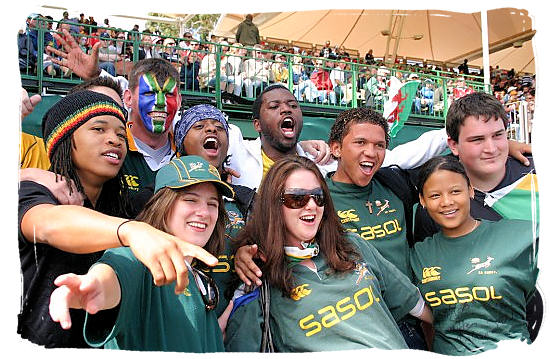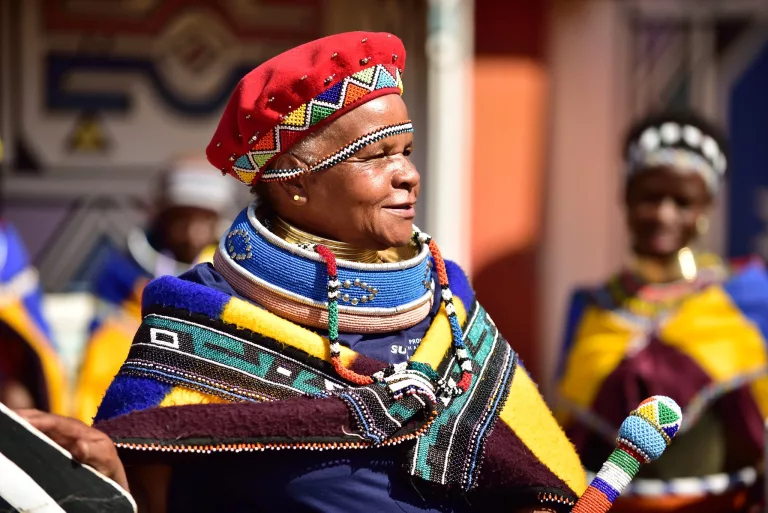A Biased View of South African Culture Today
Table of ContentsIndicators on South African Culture Today You Should KnowSome Known Details About South African Culture Today Getting The South African Culture Today To WorkSome Known Incorrect Statements About South African Culture Today The 9-Second Trick For South African Culture TodayTop Guidelines Of South African Culture Today
This follows with singing and drum whipping. The couple after that consult with the seniors and discuss the relevance of their union. A matter of relevance in Zambian villages is the passing away of loved ones. All participants of the village placed cash, time and effort together for the interment of the deceased.During the mourning period; males remain outside your house and the ladies stay inside your house of the deceased. After discussing the dead, the town walks to the location of burial to claim their last farewells. Music and dancing is a very crucial element of the Zambian culture. The numerous tribal devices have their own dance types; nonetheless, makishi is common among all tribes.
7 Easy Facts About South African Culture Today Shown
When it comes to music, drums are made use of one of the most, with a range of drumming ceremonies. In Zambia, majority of the individuals are Christian; Protestant and Roman Catholic. There are tiny teams of Muslims and Hindus, with the remainder following neighborhood native tribal beliefs.

South African heritage and society is greatly varied, and includes various groups of people that each have their own traditions and ideas. Having such a diversity of people and cultures is what makes South Africa so distinct. In truth feeling of the phrase, we are a rainbow nation.
South Africa has about 3 hundred thousand Portuguese people living in it. Making it the 7th on the list of nations with one of the most Portuguese individuals in it outside of Portugal. Portuguese is not only a culture, but it is additionally a language and a nationality. Portuguese people stem from the nation of Portugal in Europe, however, as a result of Portugal (like many various other nations in Europe) exploring the globe and conquering various other nations during the 15th 20th centuries, South Africa has what we call Portuguese South African's living in it.
Excitement About South African Culture Today
Amongst the famous features of the topography is a plateau that covers practically two thirds of the facility of the country. The plateau complex climbs towards the southeast, where it culminates in the Drakensberg array, part of a cliff that separates the plateau from the coastal locations. The Drakensburg includes Champagne Castle, the highest possible height in the country.
The area north of the Witwatersrand, called the bushveld, slopes downward from eastern to west towards the Limpopo River, which develops the worldwide boundary. The western area of the plateau, the middleveld, likewise descends towards the west and differs in altitude between the highveld and bushveld. In between the Drakensburg and the eastern and southerly coastline, the land comes down to the sea.
Nearer the coastline there is a low-lying plain called the eastern lowveld. Southwest of the plateau the country becomes gradually extra arid, providing way to the stony desert of the Great Karroo, verged on the east by the lower, better sprinkled plateau of the Little Karroo. Separating the dry southern inside from the sandy coastal of the southerly shore and West Cape is another array, the Langeberg.
How South African Culture Today can Save You Time, Stress, and Money.
The nation's racially, ethnically, and politically split background has actually created national and subnational icons that still function as icons of the nation, and others icons that are approved only by particular teams. The monuments to white settler occupation and political dominance, such as the Afrikaner Voortrekker ("leader") Monument in Pretoria and the Rhodes Monument honoring the British colonial empire building contractor and Cape prime preacher Cecil Rhodes, continue to be read this sectarian icons.
The first modern-day occupants were the San ("bushman") hunter-gatherers and the Khoi ("Hottentot") individuals, who herded livestock (South African culture today). The San might have been present for hundreds of years and left proof of their existence in countless ancient cave paintings ("rock art"). Bantu-speaking clans that were the ancestors of the Nguni (today's amaZulu, amaXhosa, amaSwazi, and vaTsonga individuals) and Tswana-Sotho language groups (today's Batswana and Southern and Northern Basotho) migrated down from eastern Africa as early as the fifteenth century

The 2 former republics of the Orange Free State and Transvaal (South African Republic) were established by Afrikaner settlers that defeated and dispossessed the Basotho and Batswana. Lesotho would have been by force included into the Orange Free State without the extension their website of British defense in 1869. The supreme marriage of the nation resulted from the South African Battle (18991902) in between the British and both Afrikaner republics, which reduced the nation to mess up at the beginning of the twentieth century.
Afrikaners historically considered themselves the just real South Africans and, while providing complete citizenship to all citizens of European descent, rejected that status to individuals of color till the democratic transition of 1994. British South Africans keep a sense of social and social connection to Great Britain without deteriorating their identification as South Africans.
Not known Incorrect Statements About South African Culture Today
The diversity and fragmentation within ethnic groups and the equilibrium of tensions between those groups during the twentieth century protected against interethnic civil conflict. While intergroup tensions over sources, privileges, and political supremacy remain, those conflicts are as most likely to pit Zulu against Zulu as Zulu against Xhosa or African against Afrikaner.
From colonial India, British merchants and managers brought the bent metal ornamental roofing systems and slender shoelace job columns that still exemplify the terraces of cottages in the areas and cities throughout the nation. Holy places contribute an important building facet also in the smallest towns. Along with the soaring steeples and traditional stonework of Afrikaans Dutch Reformed churches, Anglican churches, synagogues, mosques, and Hindu temples give range to the spiritual building scene.

Butchering and the Check This Out developing of conventional grain beer are essential in protecting the engagement and a good reputation of the ancestors who are thought about the guardians of good luck, prosperity, and well-being. Indian areas preserve their indigenous cooking customs and apply them on Islamic and Hindu routine and ceremonial celebrations. Afrikaners and Coloured people collect at weekend breaks and unique occasions at multifamily bbqs called braais, where neighborhood bonds are reinforced.
Since this was the key financial venture of both black Africans and white homesteaders, dispute in between those groups fixated the possession of grazing land and animals. In 1867, the biggest diamond down payments in the world were uncovered at Kimberley in the west central area. The riches from those fields helped fund the exploitation of the best gold reef worldwide, which was discovered on the Witwatersrand in 1886.
5 Easy Facts About South African Culture Today Explained
This brought about misconceptions and purposeful misstatement in the negotiations of white settlers and government officials with African chiefs during the early american duration (South African culture today). In the establishment of African reserves, some aspects of common and chiefly "tribal count on" land tenure were preserved, and also in white backwoods, forms of common tenure were still exercised in areas with African neighborhoods
After the democratic improvement of 1994, programs for land restitution, redistribution, and reform were instituted, but development has been slow-moving. The white minority still regulates eighty percent of the land. Following agricultural land invasions in Zimbabwe, the Department of Land Affairs has pledged to speed land redistribution.
Comments on “The smart Trick of South African Culture Today That Nobody is Discussing”